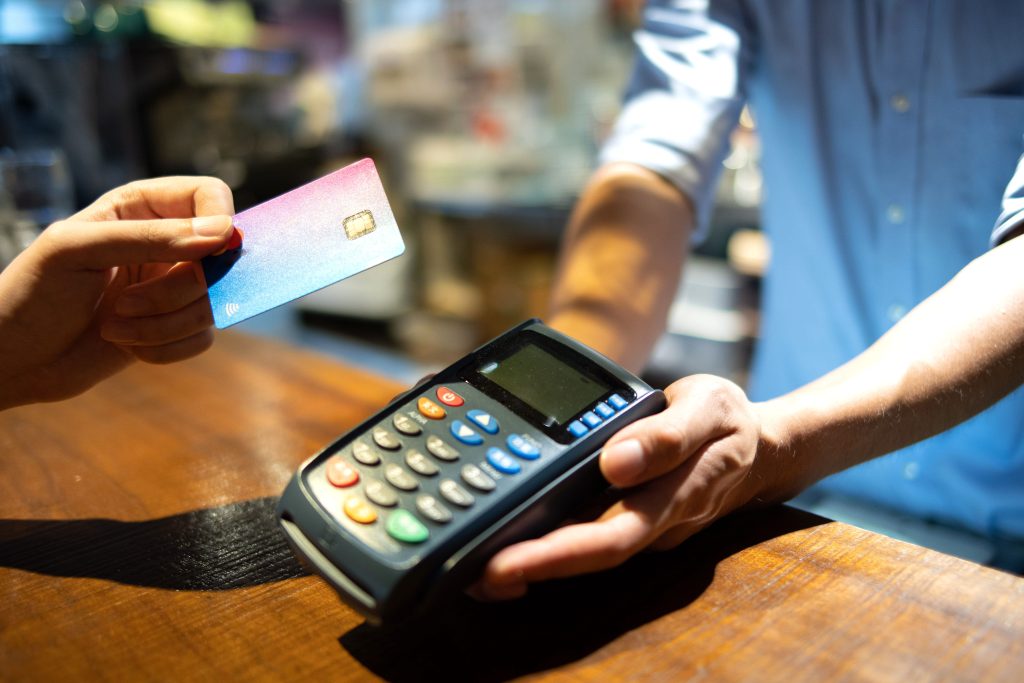In the fast-paced world of financial transactions, convenience and speed have become paramount. One of the most significant advancements in this domain is the advent of contactless payment technology in credit cards. This innovative approach has transformed the way we pay for goods and services, offering a seamless and efficient alternative to traditional methods.
This essay delves into the history, technological advancements, and future prospects of contactless payment technology, highlighting its journey from a novel concept to a mainstream method of transaction that continues to shape the future of commerce.
The birth of contactless payment technology

Contactless payment technology, now ubiquitous in modern financial transactions, began its journey in the late 1990s. Initially, this innovation was driven by the need for faster, more efficient payment methods in environments where speed and convenience were paramount, such as public transportation and small retail transactions.
The concept was simple yet revolutionary: allow consumers to make payments by simply tapping their cards on a reader, eliminating the need for physical contact or the lengthy process of swiping and entering a PIN. The early stages of contactless payment technology involved the integration of Radio Frequency Identification (RFID) chips into credit cards.
These chips allowed information to be transmitted wirelessly to a point-of-sale terminal equipped with an RFID reader. This initial implementation, while groundbreaking, faced several challenges. Consumer awareness and trust were low, and the infrastructure needed to support widespread adoption was lacking.
Technological advancements and increased adoption
As the 2010s approached, significant technological advancements bolstered the adoption of contactless payment systems. The transition from RFID to Near Field Communication (NFC) marked a critical milestone in the evolution of contactless payments.
NFC technology offered improved security features, including encrypted communication and better control over the range of signal transmission, which addressed many of the security concerns associated with earlier RFID implementations.
The integration of NFC technology into smartphones and wearable devices further accelerated the adoption of contactless payments. With the introduction of mobile wallets such as Apple Pay, Google Wallet, and Samsung Pay, consumers could link their credit cards to their devices and make payments using their phones or smartwatches.
This development significantly expanded the use case for contactless payments beyond traditional plastic cards, making the technology more versatile and accessible. Financial institutions and retailers also played a crucial role in promoting contactless payments. Banks began issuing cards with embedded NFC chips as standard, and retailers invested in upgrading their point-of-sale systems to accept contactless payments.
The future of contactless payments: Innovations and challenges
Looking ahead, the future of contactless payment technology promises even more innovations and challenges. One area of development is the enhancement of security features. As cyber threats evolve, so too must the technology that protects financial transactions.
Biometric authentication, such as fingerprint and facial recognition, is being integrated into contactless payment systems to provide an additional layer of security. Another significant trend is the expansion of contactless payment technology beyond traditional credit cards and mobile devices.
The Internet of Things (IoT) is paving the way for a new era of payment methods, where everyday objects like cars, refrigerators, and even clothing can be equipped with payment capabilities. This could revolutionize the retail experience, making transactions more seamless and integrated into daily life.
Despite these promising advancements, several challenges remain. Ensuring the security and privacy of contactless transactions in an increasingly interconnected world is paramount. Regulatory frameworks must evolve to address new risks and protect consumer data. Additionally, there is the challenge of bridging the digital divide.
While contactless payments are becoming commonplace in urban and developed regions, rural and less developed areas may lag behind in infrastructure and adoption. Ensuring that the benefits of contactless technology are accessible to all demographics will be essential for its global success.
Conclusion: The ongoing journey of contactless payment technology
The journey of contactless payment technology from its inception to its current state is a testament to human ingenuity and the relentless pursuit of convenience and efficiency. What began as a novel idea to speed up transactions has evolved into a sophisticated, secure, and widely accepted method of payment that is shaping the future of commerce.
In conclusion, while the road has been fraught with challenges, the evolution of contactless payment technology reflects the dynamic nature of technological innovation. From RFID to NFC, and now to the integration with IoT and biometrics, each leap forward has brought us closer to a more seamless, secure, and efficient way of managing financial transactions.

